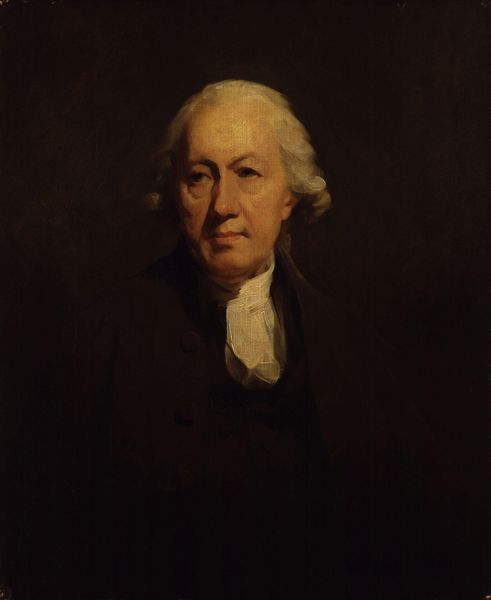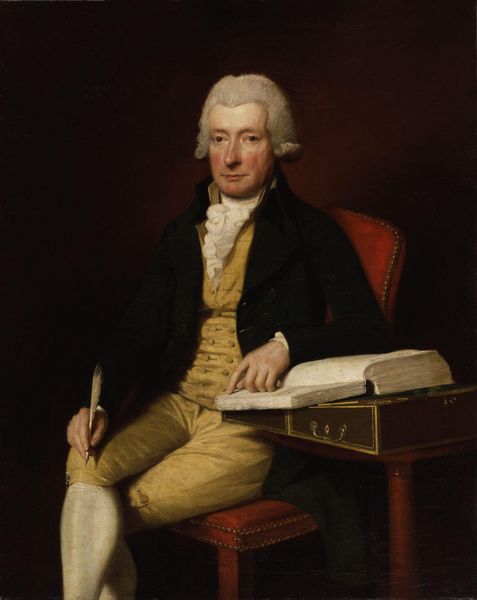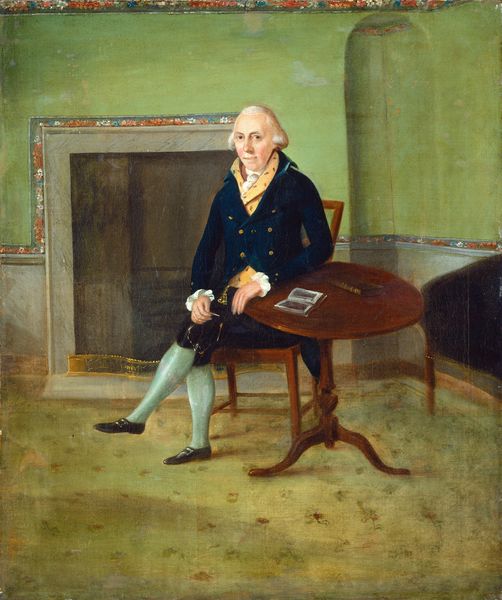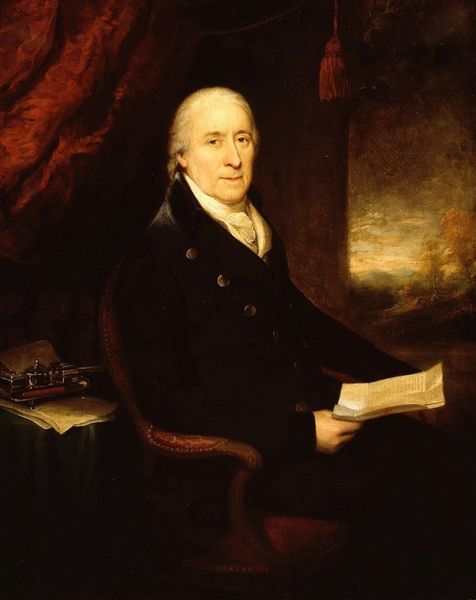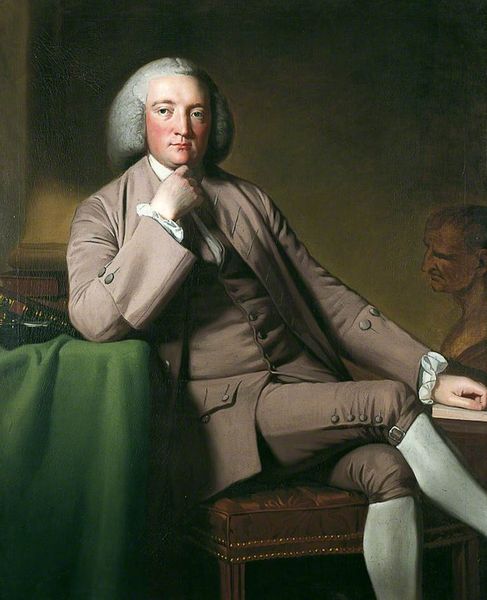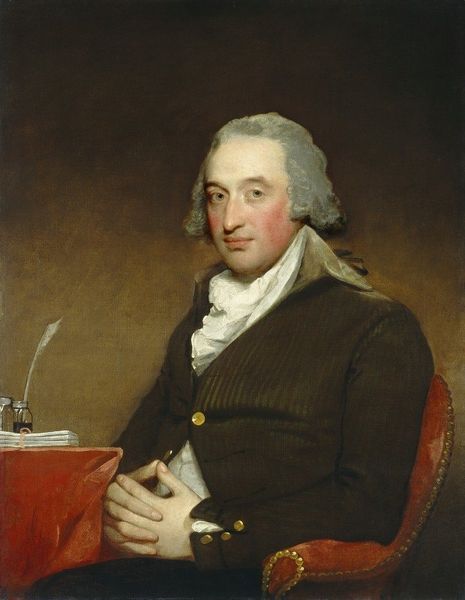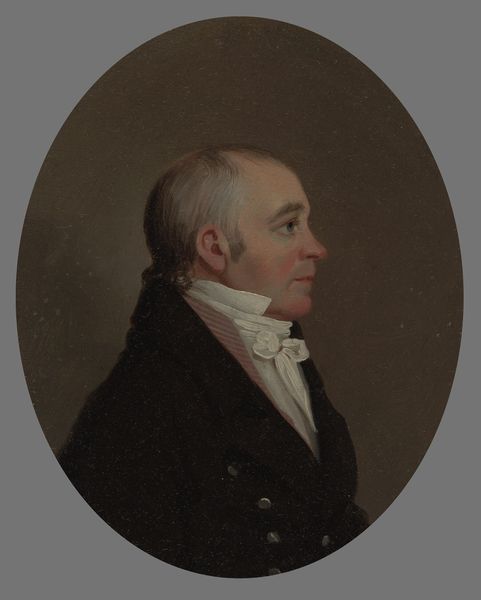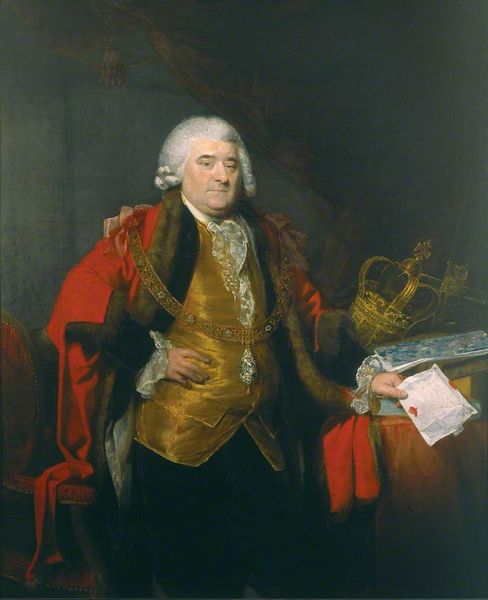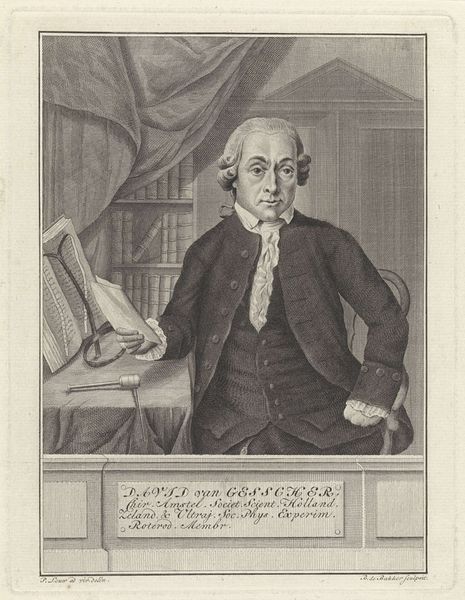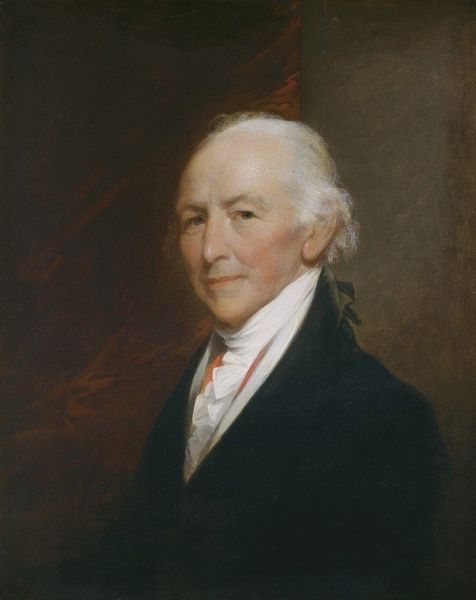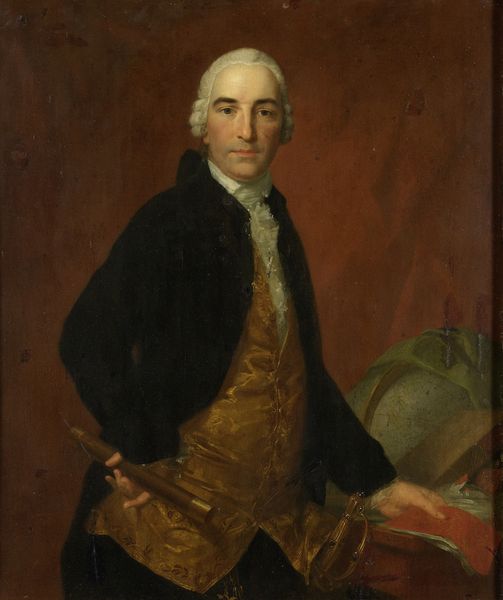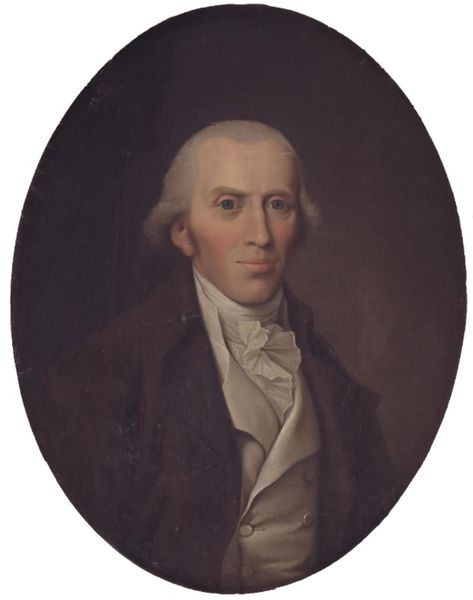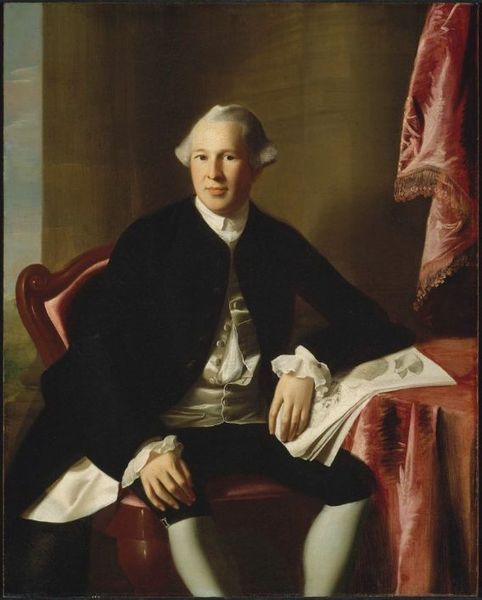
Dimensions: height 82 cm, width 68 cm
Copyright: Rijks Museum: Open Domain
Curator: This painting from 1761 by Tibout Regters is entitled, "Portrait of Jan Wagenaar, City Historian of Amsterdam." It depicts its subject, amidst papers and books, bathed in soft light. Editor: The first thing that strikes me is the stark contrast. The sitter almost emerges from the darkness; his face is illuminated, but everything around him seems to fade into shadow. There's a somber quality to it. Curator: It's certainly an example of the Dutch tradition of chiaroscuro, that manipulation of light and shadow. I think what’s fascinating here is understanding Wagenaar's role within the context of Amsterdam’s history. He was essentially creating the historical narrative, so Regters's portrait becomes not just an individual likeness, but an institutional representation, framing Wagenaar as the authoritative voice of the city's past. Editor: I agree, but I wonder if that authoritative framing also reflects the power structures of the time? Wagenaar, as a historian, controlled the narrative. I can’t help but consider who was excluded from his histories and whose stories were never told, perhaps reflecting inherent biases embedded within the societal power dynamics of the period. Curator: Precisely. The City Historian occupied a privileged position shaping public memory and, through his scholarship, solidifying certain power dynamics. However, the books, the papers scattered around him, do suggest intellectual rigor. His gaze is direct, engaging the viewer, as though challenging us to question the history he’s constructed. Editor: True, it makes you think about the responsibilities we all bear, to question those official histories and consider whose perspectives might be missing, particularly reflecting on issues of gender and race within the scope of his historical context. It speaks to the ever-evolving nature of historical understanding. Curator: Absolutely. Understanding Wagenaar’s role and Regters' depiction of it helps us engage more critically with historical narratives and their broader sociopolitical implications. Editor: Indeed. This portrait provides a fascinating entry point for grappling with the politics of history and how knowledge production can shape and reinforce power.
Comments
No comments
Be the first to comment and join the conversation on the ultimate creative platform.
